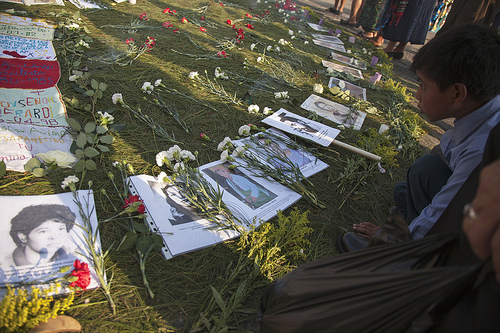Last month, the UN announced that the conflict in Syria has killed at least 92,901 people. The number has been widely picked up. Yet many reports miss how crucial the “at least” really is. 92,901 is the number of confirmed deaths – that is, a count. Mostly likely, considerably more people have died. Soon, the statisticians who came up with the count will announce the war’s total death toll. That number will be an estimate.
At first this may seem counter-intuitive. What can an estimate add when you already have a count? Shouldn’t we expect that between human rights groups, government agencies, and the media, most of the deaths during a war would get recorded? History has shown that the answer to that question is a clear no.
Patrick Ball and Megan Price, the statisticians who did the Syria count for the UN, are specialists in the quantification of violence. Their organization, the San Francisco-based Human Rights Data Analysis Group, has estimated death tolls in Peru, Guatemala, Kosovo and many other conflicts. In two of those examples — the civil conflicts in Peru and Guatemala — the researchers’ statistical analysis showed that more than half the killings were undocumented. That is, more than twice as many people were killed as had made it onto an official list.
 Sometimes statistical modeling also illuminates patterns that aren’t apparent in the raw data. In Peru, Ball and colleagues showed that the Sendero Luminoso guerilla group was responsible for more violence than many had believed, and in Guatemala they showed that indigenous people had been killed at far higher rates than others. (Ball testified about the Guatemala analysis this past spring in the war crimes trial of former Guatemalan dictator Rios Montt.)
Sometimes statistical modeling also illuminates patterns that aren’t apparent in the raw data. In Peru, Ball and colleagues showed that the Sendero Luminoso guerilla group was responsible for more violence than many had believed, and in Guatemala they showed that indigenous people had been killed at far higher rates than others. (Ball testified about the Guatemala analysis this past spring in the war crimes trial of former Guatemalan dictator Rios Montt.)
So, what should we expect to see in Syria? The differences will likely be less stark than in Guatemala; the Syrian conflict has been especially well documented, both by official organizations and by individuals using social media. But it’s still safe to assume that the numbers we’ve seen so far aren’t comprehensive. In fact, when a reporter contacted Ball asking for the raw Syria data so that he could create an infographic showing changes in violence over time, Ball refused, arguing that such a graphic would be “seriously misleading.”
To better understand this, let’s look at how Ball and Price created the list of confirmed deaths, the count. Starting with data from eight different sources (five public death tallies and three sets of non-public information), the researchers first eliminated any deaths that they couldn’t tie to a specific individual. That is, if they had a notice that five people died in a firefight, they only counted those five people if the record included their identities. Then, since they had records from eight different groups, they checked all the data for duplicates, ensuring that each individual was only counted once (part of this process was automated by software). The final product was a list of 92,901 documented deaths – the number that the UN announced.
Each death in that list is real, but, because of the documentation requirements, we can be certain there are deaths that weren’t included in the report. Those unnamed victims that were dropped from the list because they couldn’t be identified aren’t included. Neither are the deaths that never made it onto anyone’s list because no one was around to record them.
However, the way the deaths are being tracked gives researchers a way to estimate the total killings. Statisticians take advantage of the fact that multiple groups are tracking deaths. By analyzing the overlap between the various lists, they can estimate the number of deaths that didn’t make it onto any list. (Surveys are another way to estimate a total death toll, but the analysis being done in Syria is list-based.)
Ball and Price hope to release their estimate of the total number of conflict deaths in Syria soon. They expect some confusion when they do. A count – a list of the dead – brings home the cost of war in a deeply personal way. Each one of those records describes a real and specific loss. However, it’s easy to forget that a count is not a total, that, during wartime, many deaths – especially civilian deaths – don’t make it onto any formal lists. When we acknowledge this – acknowledge that we can’t know every name – we’ll be one step closer to the truth.
___________
Robin Mejia is a researcher at the Berkeley Human Rights Center and a PhD student in biostatistics at UC Berkeley. She regularly bugs Price about HRDAG’s work.
Photo: from a very sad set of photos from Guatemala, by Elena Hermosa

Whew, whether it’s due to constant wars, disease, textile factory collapses or natural disasters, the daily, global
human death toll is staggering! Just yesterday NPR reported on a projected huge increase in malaria deaths in Africa as mosquitoes develop defenses against insecticide treated bed nets. It also reported that because of inferior materials, many existing nets have developed large holes.
Anyhow, as pretty as Earth will look in the photo from space to be taken Friday (7/19/13) by the Cassini spacecraft at Saturn, looking at us thru a magnifying glass shows a startling different picture. I feel dumb lucky to have escaped all the above, calamitous situations!